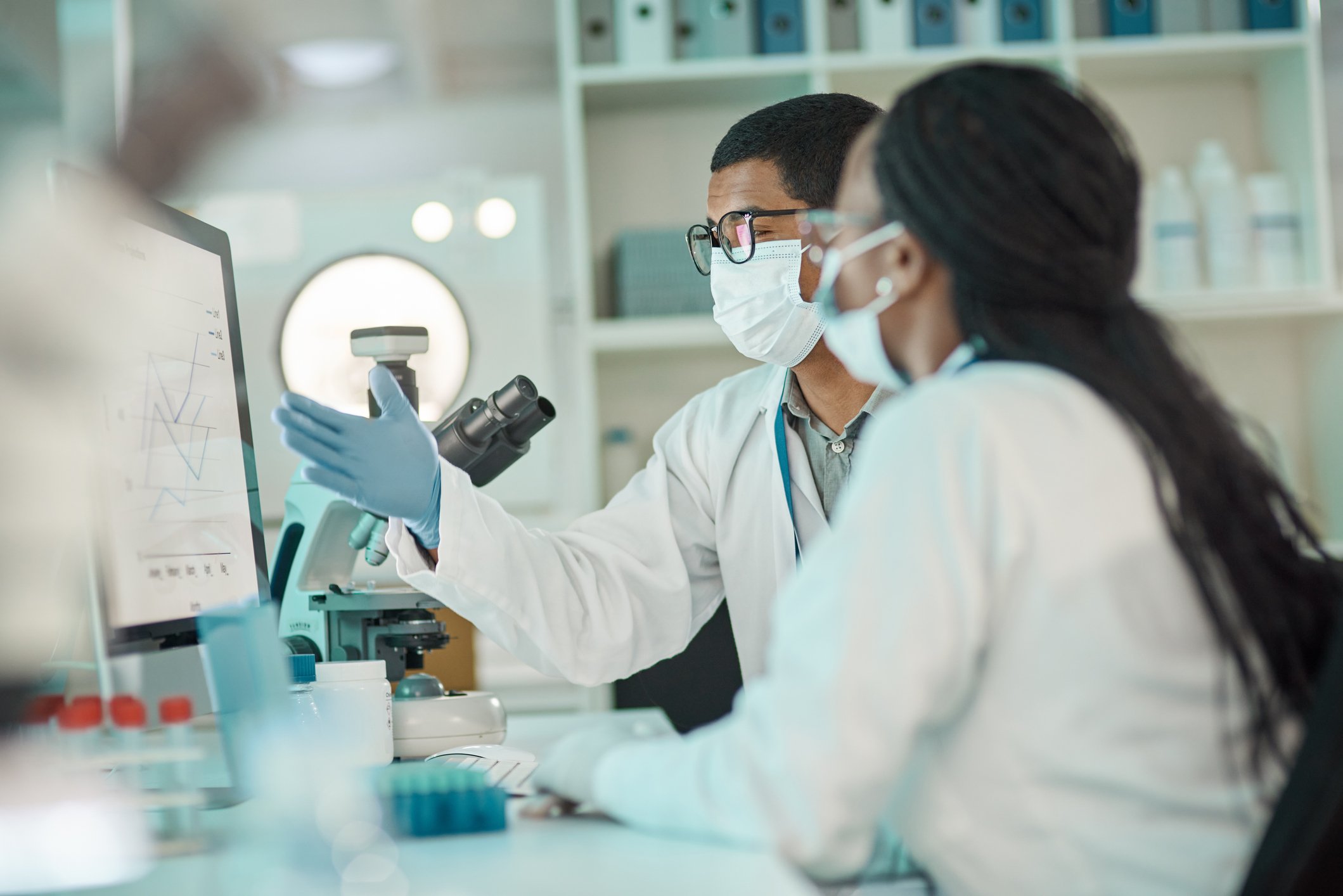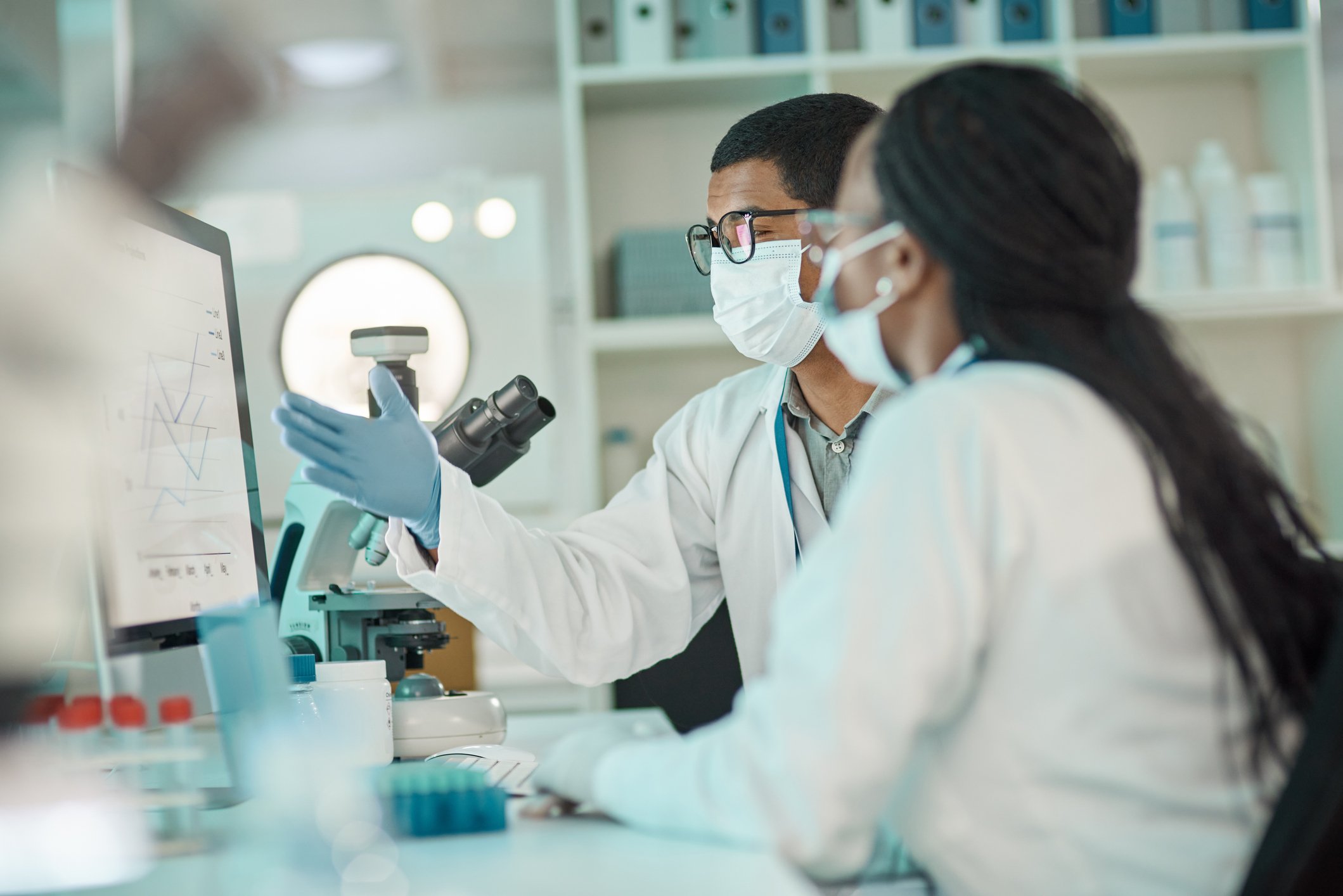The collective effort of pharmaceutical companies to develop a safe and effective coronavirus vaccine is often referred to as a "race", but it's not clear investors understand what the race is against. The "race" doesn't pit one company against another, as the typical first-to-market advantage doesn't apply during a pandemic. Instead, the race is against the coronavirus pandemic itself.
Admittedly, that's a bit abstract, but it highlights an important truth of drug development and the race to develop a coronavirus vaccine: No vaccine candidate will be successful on the basis of clinical trial results alone. Pharmaceutical companies that exit clinical trials with encouraging data will need to manufacture, package, and store product before their efforts are unambiguously successful.
Reframing vaccine development with a more encompassing view of what's at stake reveals the opportunities and risks facing individual investors wrapped up in the pharma stocks of the moment.

Image source: Getty Images.
What are the risks of manufacturing?
This is probably the first time the world has needed billions of doses of a vaccine in such a compressed time frame. On the one hand, global governments have wisely funded manufacturing upfront. Many of the top coronavirus vaccine candidates will begin manufacturing ramps well before clinical trials conclude to ensure doses are available as quickly as possible. On the other hand, the world doesn't have sufficient capacity to manufacture, package, and freeze billions of doses of new vaccines in a 12-month period.
There are bound to be manufacturing hiccups. It typically takes years to hammer out all of the kinks of biomanufacturing scale-up and deliver a regulator-approved process. That has now been shortened to months. What's more, a handful of top coronavirus vaccine candidates are based on mRNA technology, which hasn't resulted in a single commercialized product to date. The institutional knowledge for manufacturing such drug products simply doesn't exist -- the world is learning on the fly. That creates uncertainty for investors in Moderna (MRNA +2.77%), BioNTech (BNTX 3.16%), Arcturus Therapeutics (ARCT 2.61%), and Translate Bio (TBIO +0.00%), among others.

Image source: Getty Images.
Can packaging and distribution bottlenecks be addressed?
Packaging poses another risk that's easy for investors to overlook. Each vaccine candidate requires a specific type of vial, which must be made of certain materials (some materials shed particles into solution) and must be able to withstand ultra-low temperatures. Contract drug manufacturer Catalent (CTLT +0.00%) has stepped up to help Johnson & Johnson, AstraZeneca, and Arcturus Therapeutics with manufacturing and packaging of their respective vaccine candidates, but Catalent must secure sufficient volumes of vials and build new bottling capacity to deliver.
Investors should also be keenly aware of bottlenecks related to the dreaded "cold chain", or the uninterrupted series of frozen shipping containers and lab freezers that store biologic drug products. Depending on the encapsulation and delivery technology utilized, coronavirus vaccines might require storage at temperatures well below freezing. That might be acceptable for regions close to manufacturing centers, but rural regions (including in the United States) and undeveloped countries will not have unmitigated access to these formulations of coronavirus vaccines.
For example, the vaccine candidate from Translate Bio requires storage at -80 degrees Celsius (-112 degrees Fahrenheit), which means it won't be widely available if commercialized in its current formulation. In other words, your local drugstore or doctor's office won't have it. By contrast, the vaccine candidate from Moderna can maintain acceptable levels of efficacy at 5 degrees Celsius (41 degrees Fahrenheit) for three months, although much of the product's supply chain requires storage at -20 degrees Celsius (-4 degrees Fahrenheit). The temperature range should be easier to maintain with existing infrastructure.

Image source: Getty Images.
Can commercialized vaccines be distributed smoothly?
Assuming manufacturing, packaging, and cold-storage bottlenecks are addressed in an acceptable manner, there are still social factors to consider for distributing a vaccine. The first safe and effective coronavirus vaccine(s) could be available by early 2021, but availability isn't the same as accessibility.
Who should be first to receive a vaccine? How will that be determined?
According to the Centers for Disease Control and Prevention (CDC), the average age of death from COVID-19 in the United States is older than the average age of death from all causes. Additionally, the CDC reports 92.5% of all COVID-19-related deaths are in individuals 55 and older, while aggregations of state data reveal roughly half of all deaths in the United States have occurred in long-term care facilities.
The numbers suggest early access to vaccines should prioritize these groups, although such an effort seems unlikely without coordination between companies and government. What if private insurance pays higher prices than government-run programs such as Medicare, as is typical for drug products? Will the commitment to profits override the commitment to the public good? Will that create future social, political, or legal risks for vaccine developers?
Clinical trial results aren't the end of the road
As the world awaits trial results for coronavirus vaccine candidates, investors need to remember that there's more to successful drug products than clinical trial results alone. The world will need more than one safe and effective vaccine to de-risk manufacturing, distribution, storage, and other logistics. Therefore, although many stocks have ridden the coronavirus pandemic bandwagon higher by announcing their effort to develop a vaccine, there will be painful stock crashes for companies that haven't adequately addressed the bottlenecks outlined above -- and corrections for frontrunners that inevitably get tripped up.











